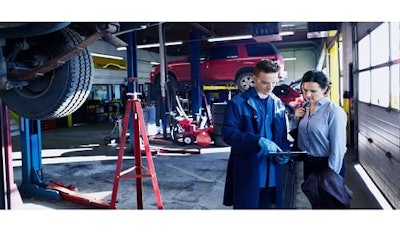
By CRM staff
Toronto, Ontario — January 22, 2019 — It’s always beneficial to know more in order to better your business practice. With that being said Collision Repair has put together five simple tricks and tips to follow, that will be sure to kick your business in high gear.
1. Advertise your Service Guarantees
If there is one thing a driver wants to know, it is that the business repairing his or her vehicle is prepared to stand behind their work. Letting them know this with an offer of a lifetime guarantee on repairs—preferably with bold type street-facing signing—is a good way to convince them that you are serious.
The idea of providing a lifetime guarantee of service is frightening to some businesses, despite being a requirement for many auto insurers. While it may sound intimidating, the median road life of a client vehicle is only about six years. Between vehicle resale, and client and insurer forgetfulness, very few guaranteed repairs are likely to return to the shop.
Make sure your customers know that you trust your own work by giving a guarantee on your repairs for a certain amount of miles or time. If you repair someone’s brakes, for instance, this will show them you’re not doing a shoddy job, causing them to come back in a few months to have the work done again. Give them a reason to trust your work and make them more likely to come back to you in the future.
2. Up or out—there should be just two routes
While reducing turnover rates is often seen as an effective way of strengthening your business, it isn’t necessarily the best approach. If there is one thing that will keep your facility strong, it is giving room for your best employees to move into more senior positions.
Originally formalized by American law firms at the end of the 19th century, the up or out model is an effective way of keeping talented members of the team invested in the facility, while reducing the effect of salary boating on the bottom line.
To be put into practice, a collision repairer should provide a clear career pathway taking an apprentice from the most junior position to a management one—or, even, a partnership one. At each step, an employer should list a set of expectations for the employee—generally performance-based ones. They should also prepare a timeline for progress to each step, and make it clear that, should they be unable to meet the expectations of the next step at the appointed time.
Not only does this technique keep salaries—especially for senior workers—at manageable levels, by providing clear metrics for success, but good employees are also given the certainty that they are less likely to be overlooked for reasons other than ability.
3. Teach a team to fish
If there is one thing that senior managers complain about, it is how much work it takes to make their team trained to handle modern repairs. Ensuring that your team has broad coverage in terms of qualifications is an administrative nightmare. For one thing, figuring out times when designated team members can make themselves available for training isn’t always easy. For another, most employees are unlikely to look for training opportunities of their own volition—but this need not be the case!
By creating a public checklist of qualifications that would bring value into the business, and adding an annual salary bonus for the first employee to gain that qualification, managers can turn a chore—one often compared to herding cats—into a competition that employees are eager to participate in.
4. Dressing the Part
Uniforms may seem a bit silly to those who just wear them on Halloween, but for those who wear them every day, they have clear advantages.
First: uniforms instill the public with confidence about the wearer’s ability to perform their job effectively. Sure, dressing for the job doesn’t necessarily mean anyone is able to do the job, but that is a separate issue.
Second: uniforms are a lifesaver when it comes to human resource and health and safety concerns. By providing an appropriate outfit that every employee must wear, you immediately cut down on awkward conversations about the appropriateness of attire.
Third: a uniformed staff is more likely to take pride in their work and arrive on time. While it isn’t clear why humans feel more invested in their work when they dress in uniforms, we do—from childhood to old age. School children who wear uniforms to school are less tardy, more likely to participate in extra-curricular activities and more likely to go to attend post-secondary programs than their uninformed peers. Professions that require a uniform also see similarly unusual benefits, with uniformed company employees having lower staff turnover, more internal promotions, and higher employee satisfaction levels.
Not only does this technique keep salaries—especially for senior workers—at manageable levels, by providing clear metrics for success, but good employees are also given the certainty that they are less likely to be overlooked for reasons other than ability.
5. Business is good for a good business
There is a charitable streak within the collision repair business that most members of Canada’s collision community can be rightly proud of. While the opportunity to make one’s livelihood by providing a vital service to people—most of whom are shaken up by a recent collision—is obviously one that holds appeal to people of a giving temperament, the industry’s charitable instincts are about more of the opportunity to do good. By becoming involved in community-based campaigns, businesses are often featured in local newspapers. In the eyes of the readers, the business becomes more than a shop front—it becomes a neighbor.























